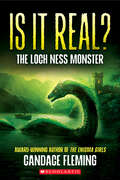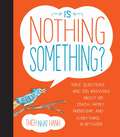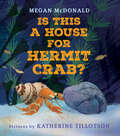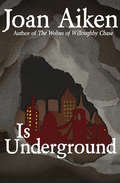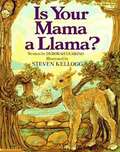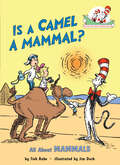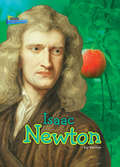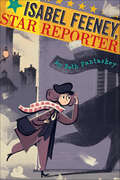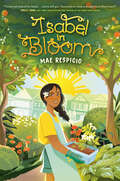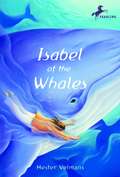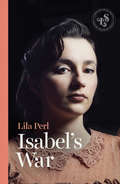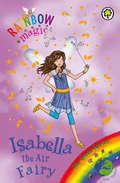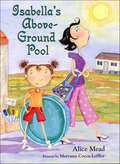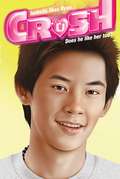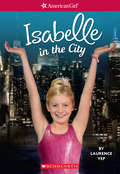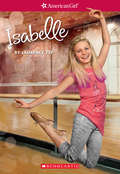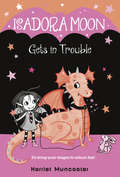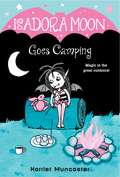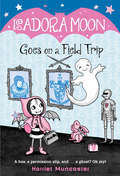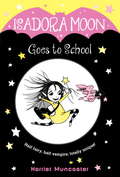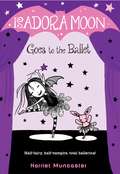- Table View
- List View
Is It Possible? Phone Booth Costume-Change (Into Reading, Level Q #18)
by Carmel Reilly Joe SciglitanoNIMAC-sourced textbook
Is It Real? The Loch Ness Monster
by Candace FlemingPut on your detective hat and prepare all your investigative tools, because you've been assigned a new case to solve: the mystery of the Loch Ness Monster!Follow along as award-winning author Candace Fleming uses all of her nonfiction tools and storytelling prowess to investigate the enduring mystery surrounding the existence of the Loch Ness Monster.Nestled in the lush green hills of the Scotland Highlands lies Loch Ness, a deep, murky lake with a storied history. It is also the home of the Loch Ness Monster. Numerous stories and photographs by people claiming to have spotted the mysterious monster have surfaced, often gaining immediate fame. But after decades of countless expeditions, documentaries, firsthand accounts, pictures, and videos, the mystery of Nessie continues to haunt us.Now, Sibert Award-winning author Candace Fleming invites you to become a detective and to join the race to uncover the truth. You'll learn how real-life detectives and scientists conduct their investigations to solve the greatest mysteries as the principles of the Scientific Method and more tools for boosting critical thinking and analysis are introduced. You will consider the evidence, see if you can tell the difference between fact and fiction, and maybe you can answer this age-old question about the Loch Ness monster: Is it real?
Is Nothing Something?: Kids' Questions and Zen Answers About Life, Death, Family, Friendship, and Every thing in Between
by Thich Nhat HanhIn Is Nothing Something? Zen Master Thich Nhat Hanh answers heartfelt, difficult, and funny questions from children of all ages. Illustrated with original full-color artwork by Jessica McClure, Is Nothing Something? will help adults plant the seeds of mindfulness in the young children in their lives. Beginning with the most basic questions, "What is important in life?" and "Why is my brother mean to me?" and progressing through issues that we all wrestle with, such as "How do I know if I really love somebody?", "How long am I going to live?", and "What does God look like?", each page presents a question with a short answer from Thich Nhat Hanh, appropriate for beginning readers to work with on their own. The back of the book has the first complete children’s biography of Thich Nhat Hanh, along with basic, kid-friendly instructions for mindful breathing and mindful walking. Both humorous and profound, Is Nothing Something? is the perfect resource for kids with questions, adults looking to answer them, and anyone with questions of their own.
Is There a Future for Fossil Fuels?
by Ellen RodgerNatural gas, oil, and coal are finite resources, and their use contributes to deadly smog and global warming. The Future of Fossil Fuels follows the world's dependence on these resources and shows how people are working to reduce their use--and even make them more environmentally friendly!
Is This a House for Hermit Crab?
by Megan McDonaldFollow a hermit crab on the perilous journey to replace his outgrown shell in this classic picture book by the author of the popular Judy Moody and Stink series.Hermit Crab has outgrown his shell, and it&’s time for a new home to keep him safe from predators. The beach is strewn with possible choices, but none are quite right. A rock is too heavy; a tin can is too noisy; a fishing net has too many holes. He stepped along the shore,by the sea, in the sand . . .scritch-scratch, scritch-scratchWhen a giant wave sends Hermit Crab careening toward a hungry porcupine fish, will he find a hiding place in time? Katherine Tillotson&’s immersive artwork breathes new life into this classic text by Megan McDonald, beloved author of the Judy Moody series. Brand-new backmatter provides further learning about all things hermit crab.A Junior Library Guild Gold Standard Selection
Is Underground (The Wolves Chronicles #8)
by Joan AikenThe children of London are disappearing—can Is solve the mystery before she vanishes too? Is Twite, younger sister of the daring Dido, is on a desperate mission. An uncle she never knew just showed up at the cottage she shares with her sister Penny. He is being pursued by ravening wolves, and before he dies, the uncle begs her to find his missing son—Is&’s cousin, Arun. The quest takes Is to London—a city mysteriously devoid of children, including the king&’s only son and heir. Is soon finds herself aboard the Playland Express, a secret midnight train that leaves town once a month, just before the new moon. The kids aboard believe they&’re headed to a far-off kingdom filled with fun and games. In reality, Playland is a freezing underground city ruled by the greedy &“Gold Kingy,&” who has lured the youngsters there under false pretenses. His real objective is to put them to work in the coal mines. But the worst is yet to come: Gold Kingy is none other than Is&’s other uncle Roy! Now it&’s up to Is to avoid a terrible fate and use her wits, ingenuity, and powers of telepathic communication to free the children. Is Underground is the 8th book in the award-winning Wolves Chronicles, but you may enjoy reading the series in any order. This ebook features an illustrated personal history of Joan Aiken including rare images from the author&’s estate.
Is Your Mama A Llama?
by Steven Kellogg Deborah GuarinoWith the clever rhyming text of this book, readers will learn to identify many animals as they follow a baby llama in search of its mother. Text copyright 2004 Lectorum Publications, Inc.
Is a Blue Whale the Biggest Thing There Is?
by Robert E WellsThe blue whale is the biggest creature on Earth. But a hollow Mount Everest could hold billions of whales! And though Mount Everest is enormous, it is pretty small compared to the planet Earth. This book is an innovative exploration of size and proportion.
Is a Camel a Mammal? All About Mammals: All About Mammals (The Cat in the Hat's Learning Library)
by Tish RabeLaugh and learn with fun facts about mammals, from the land to the sea, the smallest (pygmy shrew) to the largest (blue whale), and more—all told in Dr. Seuss&’s beloved rhyming style and starring the Cat in the Hat! &“Yes, people are mammals—amazing but true! Oh, and cats in tall hats? Well...yes. We&’re mammals, too!&” The Cat in the Hat&’s Learning Library series combines beloved characters, engaging rhymes, and Seussian illustrations to introduce children to non-fiction topics from the real world! Journey around the world and discover: what makes an animal a mammalwhat the world&’s smallest and largest mammals arehow different mammals take care of their babiesand much more!Perfect for story time and for the youngest readers, Is a Camel a Mammal? All About Mammals also includes an index, glossary, and suggestions for further learning. Look for more books in the Cat in the Hat&’s Learning Library series!High? Low? Where Did It Go? All About Animal CamouflageThe 100 Hats of the Cat in the Hat: A Celebration of the 100th Day of SchoolA Great Day for Pup: All About Wild BabiesWould You Rather Be a Pollywog? All About Pond LifeHappy Pi Day to You! All About Measuring CirclesI Can Name 50 Trees Today! All About TreesFine Feathered Friends: All About BirdsMy, Oh My--A Butterfly! All About ButterfliesOh Say Can You Seed? All About Flowering PlantsInside Your Outside! All About the Human BodyIce is Nice! All About the North and South Poles
Is a Worry Worrying You?
by Ferida Wolff Harriet May Savitz Marie LetourneauAdults think of childhood as a carefree time, but the truth is that children worry, and worry a lot, especially in our highly pressurized era. This book addresses children's worries with humor and imagination, as hilarious scenarios teach kids the use of perspective and the art of creative problem-solving.
Isabel Feeney, Star Reporter
by Beth FantaskeyIt&’s 1920s Chicago—the guns-and-gangster era of Al Capone—and it&’s unusual for a girl to be selling the Tribune on the street corner. But ten-year-old Isabel Feeney is unusual . . . unusually obsessed with being a news reporter. She can&’t believe her luck when she stumbles not only into a real-live murder scene, but also into her hero, the famous journalist Maude Collier. The story of how the smart, curious, loyal Isabel fights to defend the honor of her accused friend and latches on to the murder case like a dog on a pant leg makes for a winning, thoroughly entertaining middle grade mystery.
Isabel in Bloom
by Mae RespicioA girl discovers a connection between her home in the Philippines and her new home in the U.S. through a special garden in this middle grade novel that celebrates nourishment and growth.Twelve-year-old Isabel is the new kid in her San Francisco middle school. It&’s the first time in many years that she&’ll be living with her mother again. Mama's job in the US allowed Isabel and her grandparents to live more comfortably in the Philippines, but now Isabel doesn't really know her own mother anymore.Making new friends in a new city, a new country, is hard, but joining the gardening and cooking club at school means Isabel will begin to find her way, and maybe she too, will begin to bloom. In this beautifully rendered novel-in-verse, Mae Respicio explores how growth can take many forms, offering both the challenges and joy of new beginnings.
Isabel of the Whales
by Hester VelmansEleven-year-old Isabel is a "plain old" girl living in Provincetown, Massachusetts, who believes that she is destined to accomplish something special. When her fifth-grade class goes on a whale-watch field trip, something amazing happens: Dozens of different species of whales surround the boat, bumping the deck and sending Isabel flying into the ocean. Isabel is shocked to hear the whales speaking to her--she is a mermaid, they tell her, a "Chosen One" who has the ability to turn from a human into a whale and back again. She is destined to live among the whales long enough to learn their ways, and teach them about the human world. Living among her pod is fun, at first, but Isabel has an important mission. She will change the whales' future forever, and learn a lot about herself in the process.From the Hardcover edition.
Isabel's War
by Lila PerlIn a stunning new novel completed just before her death in 2013, award-winning author Lila Perl introduces us to Isabel Brandt, a French-phrase-dropping twelve-year-old New Yorker who's more interested in boys and bobbing her nose than the distant war across the Pacific--the one her parents keep reminding her to care more about. Things change when Helga, the beautiful niece of her parent's best friends, comes to live with Isabel and her family. Helga is everything Isabel's not--cool, blonde, and vaguely aloof. She's also a German war refugee, with a past that gives a growing Isabel something more important to think about than boys and her own looks. Set in the Bronx during World War II, Isabel's War is a beautiful evocation of New York in the 1940s and of a girl's growing awareness of the world around her.Lila Perl, the daughter of Russian immigrants fleeing anti-Semitism, published over sixty volumes of fiction and nonfiction for young readers during her long and distinguished career. In addition to the beloved Fat Glenda series, Perl twice received American Library Association Notable awards for nonfiction and was a recipient of the Sidney Taylor Award for Four Perfect Pebbles: A Holocaust Story. She died in 2013 at the age of ninety-two. Isabel's War and its completed sequel, Lilli's Quest, were her final works.
Isabella the Air Fairy: The Green Fairies Book 2 (Rainbow Magic #2)
by Daisy MeadowsKirsty and Rachel are delighted to meet Isabella - she's in the human world to help make the air clean again. They soon meet a friendly butterfly who needs a new home... But, with a naughty goblin nearby, will they be able to help her...?
Isabella's Above-Ground Pool
by Alice Mead"I won't share 'cuz it's not fair!" is nine-year-old IsabellaSpeedwalker-Juarez's motto. It's all because she's stuck in a roomwith her toddler brother, Dozer. Mom says Izzy has to adapt toGranny's tiny trailer, where they've just moved because moneyis tight and Mom is worried about losing her job at the gumfactory. Izzy knows what will make everything better – anabove-ground pool. She'll swim in it for hours, and she won'tshare it with anyone, not even her new classmates or her friendDeborah Nibblebitz-Fifer. With help from Zachary O'Toole, theneighborhood handyman – and from Deborah – Izzy plans tohold a car wash to raise money. But when things finally startto go her way, a tornado damages the neighborhood, and Izzybegins to rethink her motto.Sparkling illustrations and a large dose of warmhearted humormake Isabella's dilemma – and change of heart – easilyidentifiable to young readers everywhere.
Isabella's Spring Break Crush
by Angela DarlingA trip to grandma's gets a lot more interesting when a cute crush is involved!Isabella isn't exactly thrilled to be spending spring break with her twin brother and their sunscreen-obsessed, worrywart grandma in Florida. That is, until Grandma Miriam actually turns out to be a lot more fun when Mom isn't around--she sings along in the car, buys them ice cream, and has tons of cool day trips planned for the three of them. But when Grandma Miriam introduces Isabella to her friend's gorgeous grandson, Ryan, all thoughts of day trips with her grandma and brother go out the window. Will Isabella be able to get Ryan alone before spring break is over? And if she does, what then?
Isabelle in the City: Girl of the Year 2014) (Girl of the Year)
by Laurence YepIsabelle and her sister, Jade, are off to New York City for a summer ballet program. It feels like a dream come true - until Isabelle meets her Japanese roommate, Miki, who doesn't seem to want to spend any time with her. When Isabelle realizes that Miki has trouble speaking English, she searches for a way to bridge the gap between them. Can the two girls from different cultures find a way to communicate through their shared love of dance?
Isabelle: Girl of the Year 2014, Book 1) (Girl of the Year)
by Laurence Yep Anna KmetIsabelle is excited about starting her first year at the Anna Hart School of the Arts! But she can't help comparing herself to her older sister, Jade, who attends the same school and is an amazing ballerina. Isabelle's other classmates are equally talented, and she starts wondering whether she really belongs at her new school. She earns a role in the fall festival, but she struggles during rehearsals. Can Isabelle learn how to focus less on those around her and more on her own dancing? With help from her sister and her friends, Isabelle may discover a unique talent that she can truly call her own.
Isadora Moon Gets in Trouble (Isadora Moon #8)
by Harriet MuncasterFans of Vampirina and the Princess in Black series will love Isadora Moon: half-fairy, half-vampire, totally unique--and totally in BIG trouble!Isadora wants to take Pink Rabbit to class for "Bring Your Pet to School Day." But her older cousin Mirabelle has a much better plan--why not take a dragon? What could possibly go wrong. . . ?Sink your fangs into all of Isadora's adventures! Isadora Moon Goes to SchoolIsadora Moon Goes CampingIsadora Moon Goes to the BalletIsadora Moon Has a BirthdayIsadora Moon Goes on a Field TripIsadora Moon Saves the CarnivalIsadora Moon Has a Sleepover
Isadora Moon Goes Camping
by Harriet MuncasterMeet Isadora Moon! She's half-fairy, half-vampire and totally unique!Camping is full of surprises when you're a vampire-fairy! When Isadora Moon and her family go on a camping trip to the beach, they’re just like everybody else. They roast marshmallows and build sand castles and sleep in a tent! But in a magical family, anything can happen. And when Isadora goes on a nighttime adventure, she makes an unusual friend under the sea. . . .
Isadora Moon Goes on a Field Trip (Isadora Moon #5)
by Harriet MuncasterFans of Vampirina and the Princess in Black series will love Isadora Moon: half-fairy, half-vampire, totally unique--and totally unafraid to be different!Isadora is the only half-fairy, half-vampire in her human school. She knows what it's like to be different. But that's okay because everyone at her school is a little different from everyone else! When Isadora's classmates are frightened by a field trip to a spooky old castle (what if they see a ghost?!), it's up to Isadora to remind them that things that are different aren't necessarily scary.
Isadora Moon Goes to School
by Harriet MuncasterMeet Isadora Moon! She's half-fairy, half-vampire and totally unique!Isadora Moon loves sunshine — and nighttime. She loves her magic wand — and her black tutu. She loves spooky bats — and Pink Rabbit. Isadora is half-fairy, half-vampire, and she’s special because she is different! Now Isadora’s parents want her to start school, but she’s not sure where she belongs — fairy school or vampire school?
Isadora Moon Goes to the Ballet
by Harriet MuncasterFans of The Princess in Black and Vampirina Ballerina, meet Isadora Moon: half-vampire, half-fairy and totally unique!Isadora Moon is special because she is different. But just like her other classmates, Isadora loves the ballet. That's why Isadora can't wait for a field trip with her class to see the performance of Alice in Wonderland. Everything is totally normal. And then the curtain rises and Isadora's special best friend, Pink Rabbit, is not in his seat. . .

